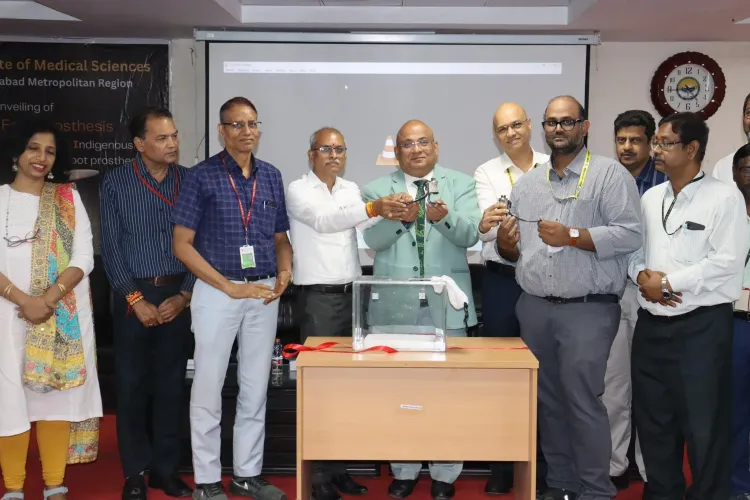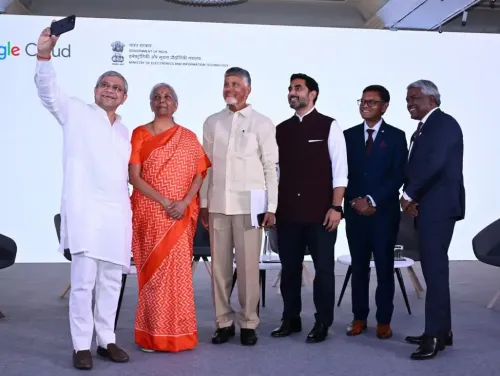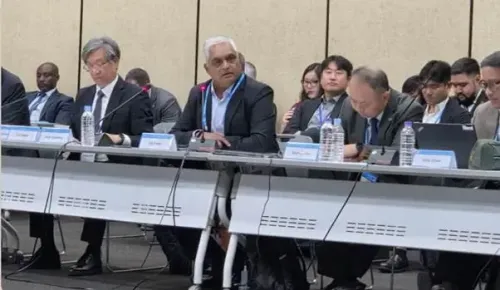How Have DRDO and AIIMS Telangana Created an Indigenous Low-Cost Prosthetic Foot?

Synopsis
Key Takeaways
- Indigenous Development: Collaborative innovation by DRDL and AIIMS.
- Accessibility: Affordable prosthetic solutions for low-income amputees.
- Cost Reduction: Production costs significantly lower than imports.
- Biomechanically Tested: Designed for durability and safety.
- Social Impact: Enhances mobility and independence for disabled individuals.
New Delhi, July 15 (NationPress) In a groundbreaking achievement, researchers from the Defence Research and Development Laboratory (DRDL) and AIIMS Bibinagar in Telangana have introduced an innovative and affordable prosthetic foot aimed at enhancing mobility for individuals with limb loss, as announced by the Ministry of Defence on Tuesday.
The first-ever indigenous, cost-effective Carbon Fibre Foot Prosthesis has been developed under the Aatmanirbhar Bharat initiative. This advancement will enable amputees from economically disadvantaged backgrounds to access high-quality prosthetics while simultaneously reducing production costs within the nation.
The new prosthetic foot has undergone biomechanical testing, capable of supporting loads of up to 125 kg with ample safety factors. It also comes in three variants tailored to accommodate patients of varying weights.
“This foot is crafted with the intent of providing a premium yet affordable solution that is accessible to a wider range of individuals in need, delivering performance comparable to existing international models,” stated the Ministry.
“It is anticipated that production costs will plummet to below Rs 20,000, a stark contrast to the current imported counterparts that can reach around Rs 2 lakh,” they added.
In India, the demand for foot prosthetics is considerable, fueled by a high prevalence of limb loss caused by accidents, medical conditions, and congenital disabilities.
Prosthetics play a vital role in restoring mobility and independence; however, affordability and accessibility remain significant hurdles for many.
High-quality prosthetic devices often come with steep price tags, rendering them unattainable for a large portion of the Indian populace. Additionally, the limited availability of skilled prosthetists and rehabilitation facilities, particularly in rural locales, exacerbates the challenges surrounding prosthetic care.
The newly developed prosthetic foot is designed for active K3-level users, delivering exceptional performance at an economical price point.
“This innovation is set to greatly enhance access to high-quality prosthetics for low-income amputees in India, decrease reliance on imported technologies, and foster greater social and economic inclusion for individuals with disabilities,” the Ministry remarked.









